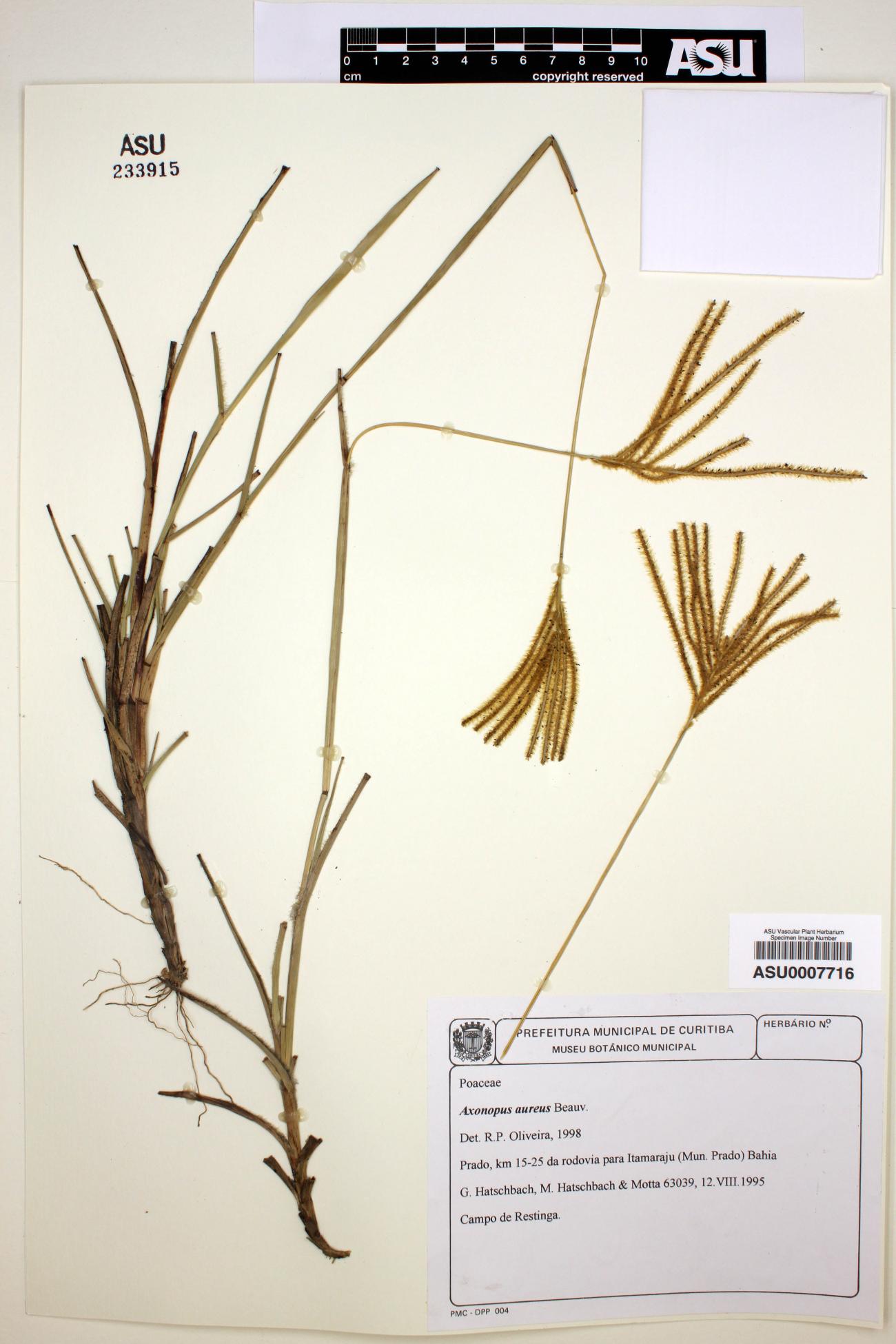Axonopus
|
Family: Poaceae |
Plants perennial, rarely annual; cespitose, loosely tufted, or mat-forming, sometimes rhizomatous or stoloniferous. Culms 7-300 cm, not woody, often decumbent at the base, erect to ascending. Sheaths open; ligules membranous, truncate, ciliate; blades flat or convolute, usually obtuse. Inflorescences terminal, sometimes also axillary, panicles of 2-many, digitately, subdigitately, or racemosely arranged spikelike branches; branches triquetrous, spikelets subsessile or sessile, solitary, in 2 rows, lower lemmas appressed to the branch axes; disarticulation below the glumes. Spikelets dorsally compressed, with 2 florets; lower florets sterile or staminate; upper florets sessile, bisexual. Lower glumes absent; upper glumes and lower lemmas equal, membranous; lower paleas absent; upper lemmas indurate, usually glabrous, sometimes with an apical tuft of hairs, margins slightly involute, clasping the palea, apices acute to obtuse; upper paleas similar to the upper lemmas in texture. Caryopses ellipsoid. x = 10. Name from the Greek axon, axis, and pes, foot. Spikelets 1-fld, sessile in 2 rows on a 3-angled or 3-winged rachis, forming a slender, elongate raceme; first glume none; second glume equaling the sterile lemma; fertile lemma and palea indurate, the former with narrowly inrolled margins, its back turned from the axis of the raceme; lvs obtusish; peduncles long, terminal (or also axillary), bearing 2 or 3 terminal digitate racemes, or with 1 or 2 other racemes below the summit. 100+, warm Amer. Gleason, Henry A. & Cronquist, Arthur J. 1991. Manual of vascular plants of northeastern United States and adjacent Canada. lxxv + 910 pp. ©The New York Botanical Garden. All rights reserved. Used by permission. |

